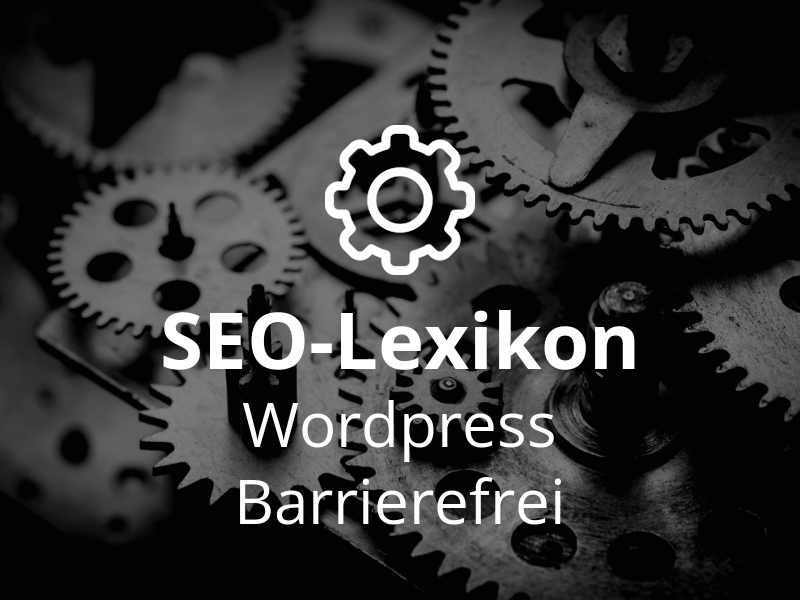What is accessibility in WordPress?
Accessibility in WordPress refers to designing websites in such a way that they are accessible to all user groups, regardless of individual restrictions. WordPress, as one of the most popular Content-management systems, offers a relatively barrier-free user experience compared to other platforms. Backendwhich is improved by constant updates.
Backend and user experience
At Backend from WordPress the user experience is optimized through consistent and intuitive designs. The CMS promotes the use of semantic HTML and ensures easy keyboard navigation. The Gutenberg editor, the integrated means of content creation, still has potential for improvement but is continuously being developed to increase accessibility. The aim is to ensure that all users, with or without disabilities, have equal access to the platform.
Broader applicability and advantages
Accessible websites are not only beneficial for people with disabilities, but also for those with mobile devices or slow internet connections. By complying with the Web Content Accessibility Guidelines (WCAG) the website will be both more versatile and future-proof. These guidelines provide developers and designers with essential guidance to promote digital inclusion and ensure that web content is usable for the widest possible audience.
Design principles for accessible web design
Accessible web design principles aim to make a website accessible and understandable for a large number of users. A central aspect is the creation of a intuitive, consistent user interface. Such interfaces make operation and navigation easier by using familiar patterns and clear structures. Clear and simple language is also essential to make content easier to understand.
Visual and functional accessibility
Another important component is the focus on sufficiently high Color contrasts and easily legible font sizes. These factors not only improve readability for people with visual impairments, but also in situations with poor lighting conditions or on smaller screens. Interactive elements such as menus and forms should be designed in such a way that they can be fully navigated using the keyboard in order to accommodate people with motor impairments. In addition, colors should not be the only distinguishing feature to ensure that all information can be perceived regardless of color differences.
Content strategies and techniques
When designing accessible websites, the content should also be adapted accordingly. This includes, for example, the provision of alternative texts for images to provide visually impaired users with contextual information. Subtitles or transcriptions for videos are just as important. The use of semantic HTML enables the content to be clearly structured, which benefits both user-friendliness and indexing by search engines. These techniques ensure that the content can be easily navigated by both machines and humans.
Useful plugins and tools to support accessibility
Plugins and tools are essential helpers to optimize the Accessibility of WordPress websites to improve and evaluate. They offer a wide range of functions, ranging from text enlargement to higher contrast views. Such plugins make it possible to make websites accessible to a wider audience, especially for people with visual or motor impairments.
Special plugins for accessibility
Numerous plugins are specially designed to promote accessibility on the web. For example, some offer the option of using simple buttons to increase the text size or enhance the contrast, allowing people with visual impairments to better perceive the content. Other plugins help to create reading modes that hide distracting elements and focus on the textual content.
Evaluation tools and manual optimization
In addition, there are numerous tools for Evaluation and improvement of the Accessibility. These analyze the website for compliant structure and content in accordance with the web Content Accessibility Guidelines. However, while automated solutions enable an initial analysis, manual checking is essential. Experienced users should always be involved in the process to ensure that all aspects are covered. The effectiveness of these tools and plugins depends heavily on the experience and knowledge of the users, with the actual Accessibility often has to be optimized by manual intervention.
Legal and strategic aspects of digital inclusion
The digital Accessibility has taken on a legal dimension in many regions of the world. In the European Union, the European law on Accessibility (EAA), the obligation to make digital content and services accessible. This aims to prevent discrimination in the digital space and ensure the inclusion of all citizens. Companies and developers who ignore these regulations not only risk legal consequences, but also the exclusion of potential user groups.
Strategic planning and implementation
Successful implementation of digital inclusion starts with strategic planning that considers all aspects of web design, code and content. A forward-looking strategic direction makes it easier, Accessibility as an integral part of the development processes. This approach goes beyond mere compliance and positions Accessibility as a valuable business strategy that can also bring economic benefits. Incorporating user feedback is an essential part of this to ensure continuous improvement.
User-centered perspective
To promote digital inclusion, it is crucial to adopt a user-centered perspective. This means understanding the specific needs of different target groups and proactively implementing solutions that benefit everyone. Such an approach not only increases user satisfaction, but also strengthens users' trust in digital services. In an increasingly digitalized world, compliance with accessibility standards is becoming not only a legal obligation, but a decisive factor for success on the web.
« Back to Glossary Index

